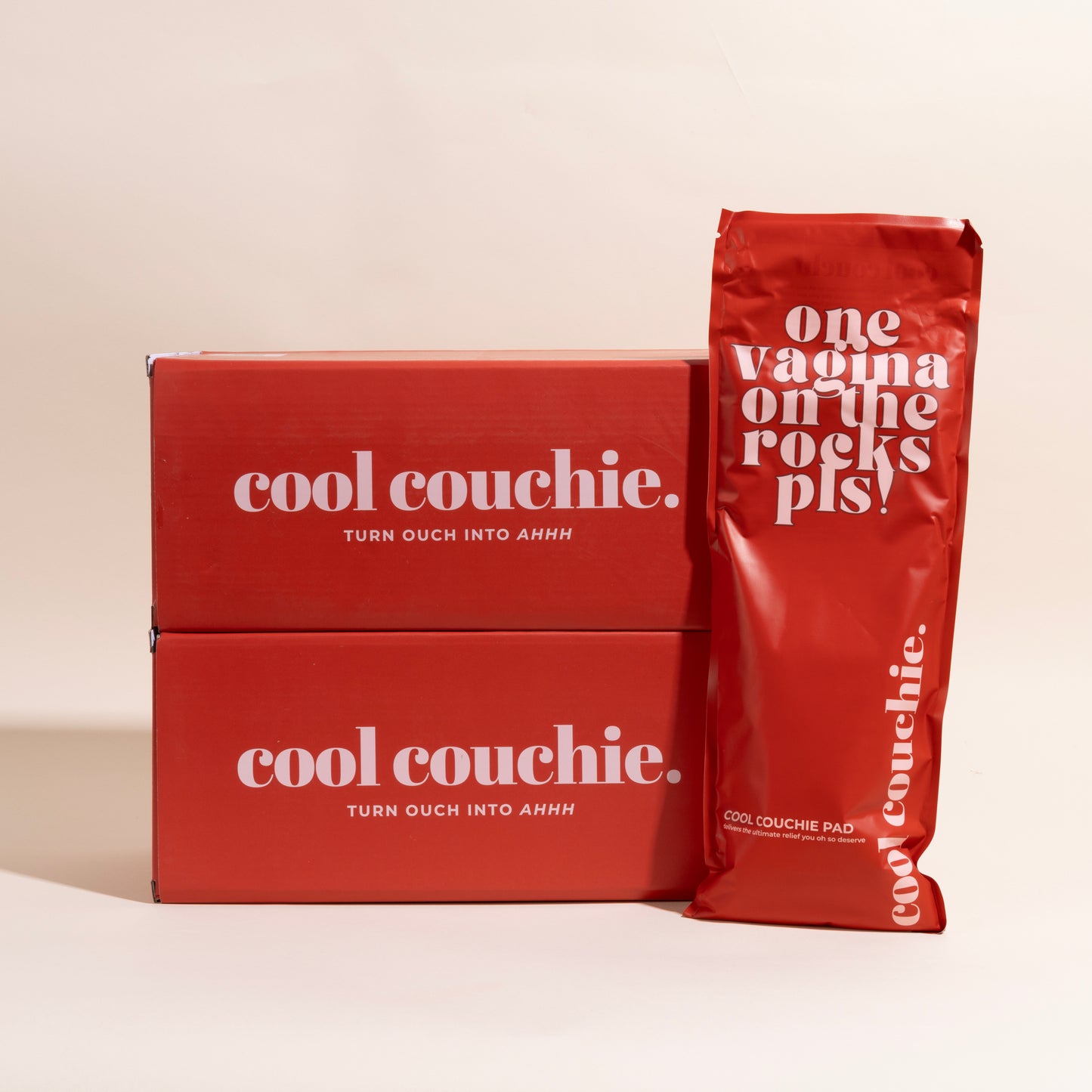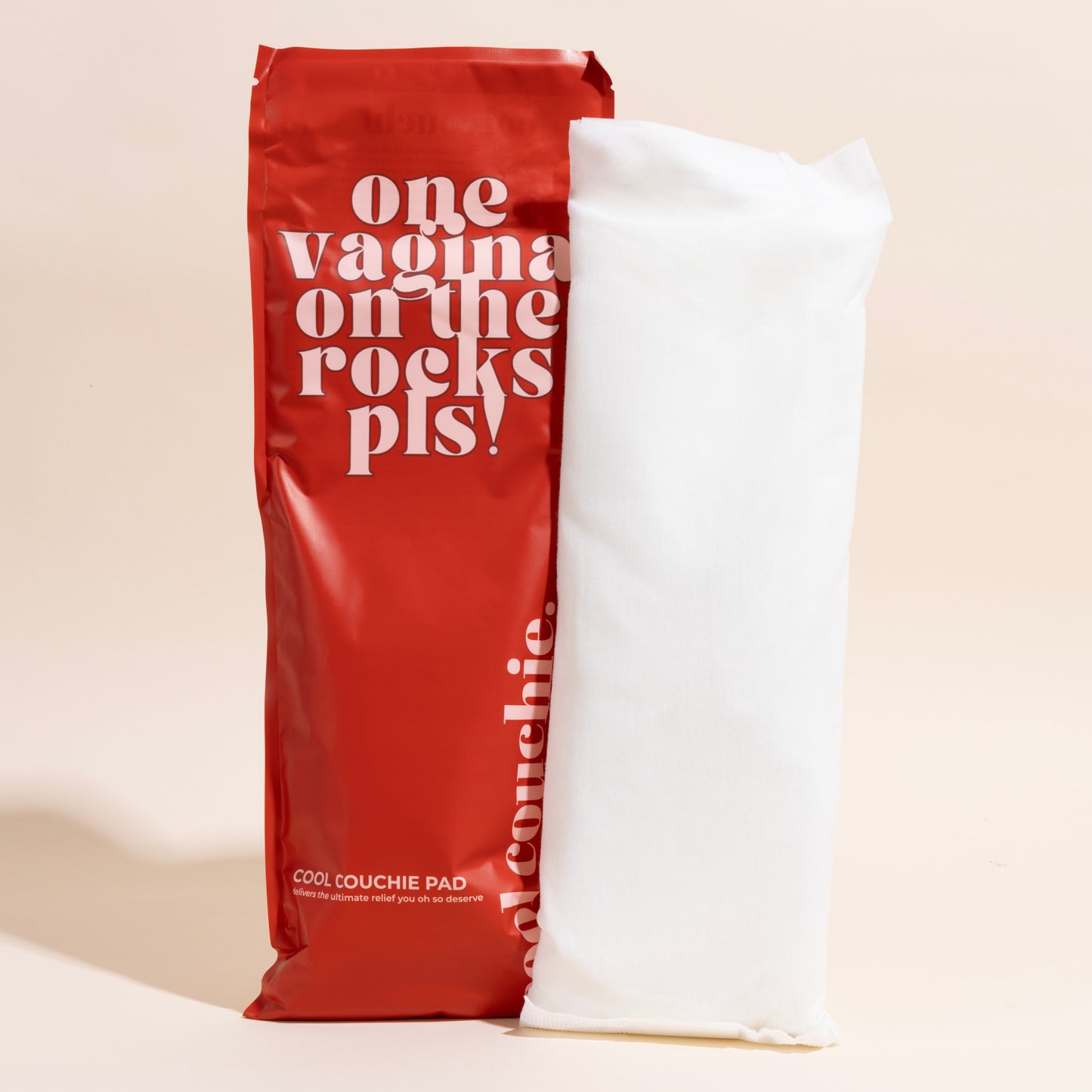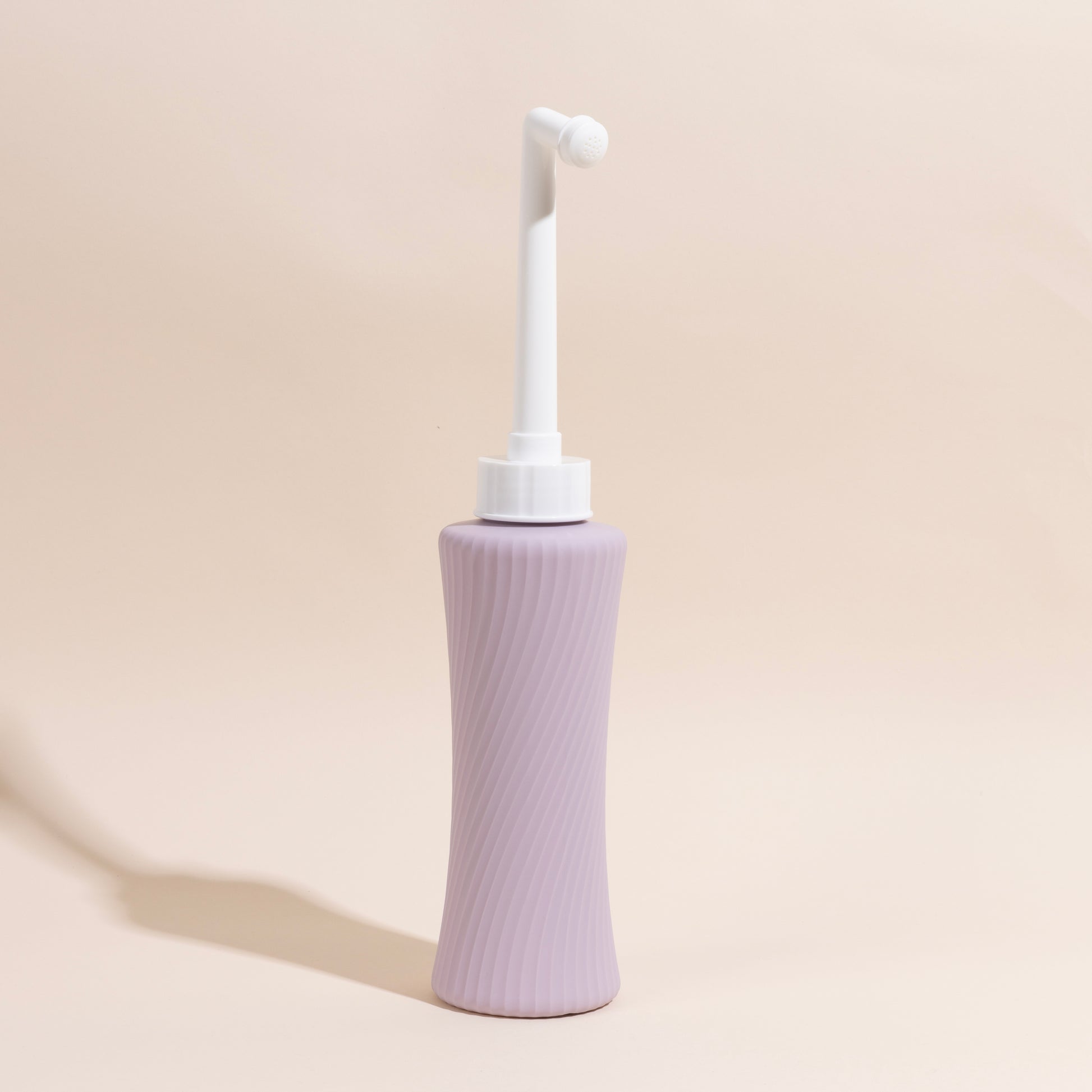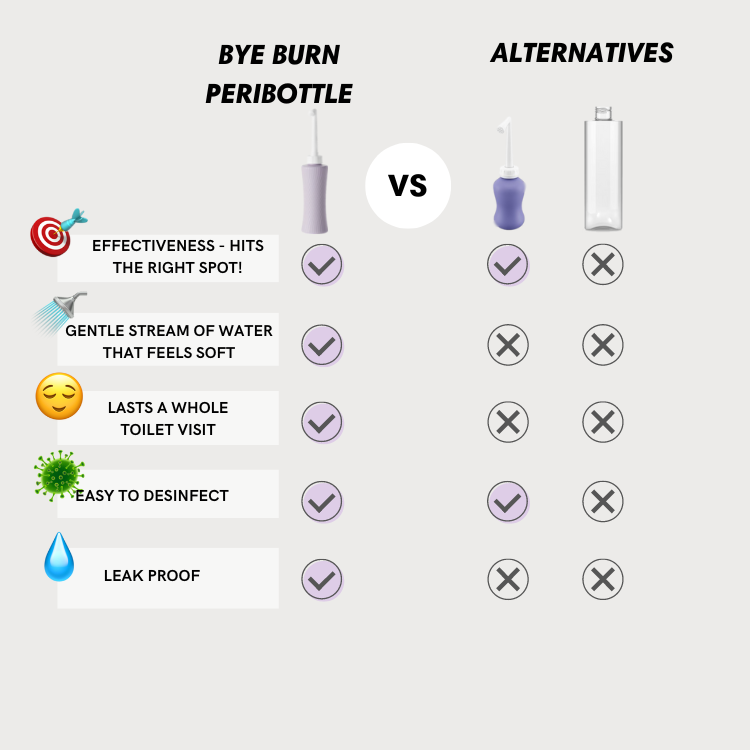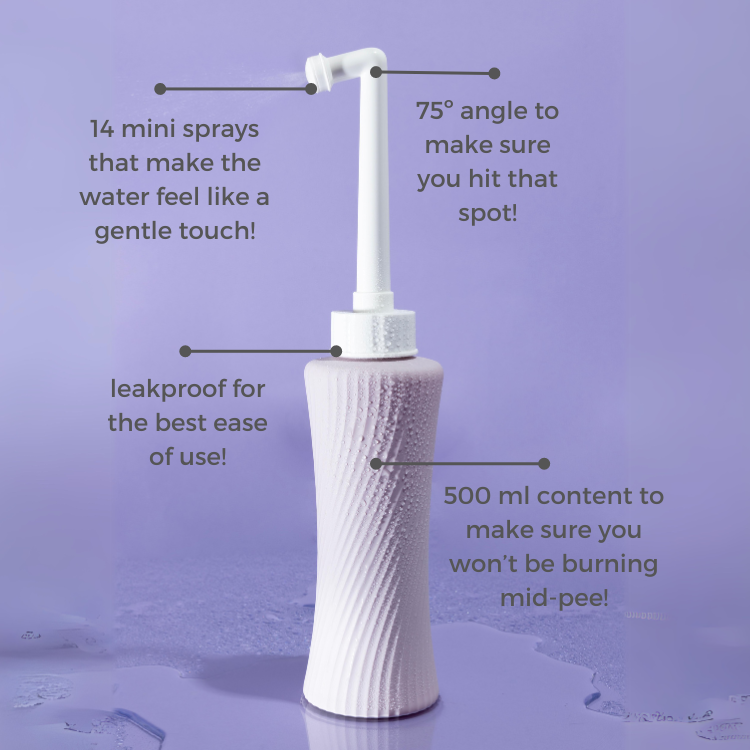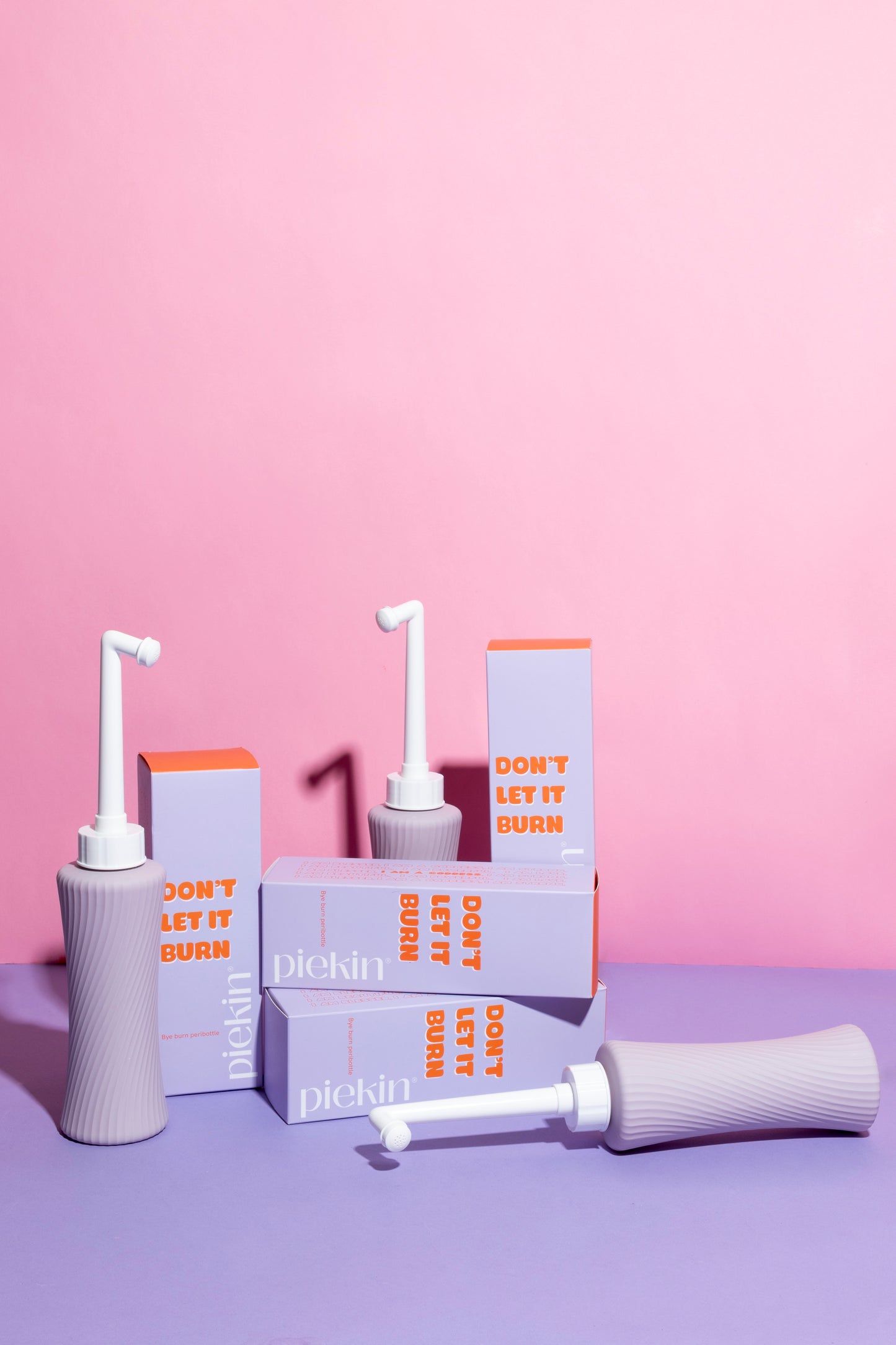You’ve probably seen it pop up in hospital bag checklists, TikTok pack-with-me videos or on mom forums: the peri bottle. But what exactly is that little squirt bottle really for? A peri bottle (also called a postpartum rinse bottle) is specially designed to support you after childbirth. It helps reduce that burning sensation when you pee and allows you to gently and hygienically clean your intimate area.
You don’t just use it after peeing, but while you're peeing too. It soothes irritation, eases that uncomfortable burning feeling, and reduces the risk of infection. In fact, studies show that using a peri bottle can contribute to a quicker and more comfortable postpartum recovery.
In short: a peri bottle can make a world of difference in your first week as a new mom.
How does a peribottle help with that burning feeling after giving birth?
Especially if you have stitches or small tears, peeing can cause a stinging or burning sensation. That’s because urine (which is naturally acidic) flows over broken skin. By rinsing with warm water while you pee, you dilute the urine and minimize the sting. Aim the nozzle from the front and direct the stream toward the area with stitches or soreness.
Peribottle use: Soothing peeing with stitches or tears
Sterilizing your peribottle before first use: Avoid Infections
Before you use it, make sure to sterilize your peribottle. Yes, really! You’ll be spraying directly onto wounds, so the last thing you want is to introduce bacteria. Forget the Karen's who who say “in my time I just used my water bottle worked” — you know better and are taking real care of your body. A clean bottle is a must for a healthy recovery.
Your first bathroom visit after birth: How a peribottle can help with the pain
That first pee after giving birth? It can be intense - physically and mentally. You might have to work up the courage just to go. Tip: exhale slowly and fully as you sit on the toilet. (Yes, your birth class breathing still comes in handy!) This helps to relax and get your pee started.
Once you've finally gathered the courage to pee for the first time, you'll definitely want a reliable peribottle, because—how annoying is it if your peribottle runs out halfway through and that burning feeling kicks in? So make sure you have a peribottle with enough capacity (500ml if possible!). It can really help to start rinsing even before you begin to pee. This helps if you're feeling nervous, making it easier to get the flow going.
Fill the peribottle with lukewarm water or chamomile tea. Chamomile tea if you're feeling extra fancy—lukewarm water works just fine too.
Pay attention to the design of the peribottle: a long neck is useful so you can easily reach your stitches or tears without fumbling. And trust me, those spray holes make a real difference—the more small holes (ideally less than 1 mm), the softer the stream feels. It’s like a tiny showerhead for your sensitive area. Truly a lifesaver, because it lets you pee without being afraid of that nasty burning sensation (and it also helps prevent a bladder infection!).
And last but not least: don’t forget to pack it in your hospital bag! Once you're home, keep it in the bathroom (where you have access to warm water).
So remember for your first trip to the toilet: breathe in, breathe out slowly and deeply, start rinsing before you pee—it’ll make everything much easier. And make sure you’ve got a good peribottle to make life just a little more comfortable!
At the bottom of this blog, you’ll find a special offer: you can get the Bye Burn Peribottle completely free!
Using a peribottle after peeing: Prevent infections during the early postpartum days
The second, perhaps lesser-known use of the peribottle: you can also use it to rinse your vaginal area after urinating. This helps keep the area clean and reduces the risk of infection. After rinsing, you can gently pat the area dry with a towel or soft toilet paper.
Important note: only use this rinsing method during the period when you're bleeding heavily. After that, it’s discouraged by Dutch healthcare professionals, as rinsing may disrupt the pH balance. So make sure to use the peribottle specifically for rinsing in the early days of your postpartum week, when heavy bleeding and possible clots are still occurring.
The most effective peribottle — and you can get it for free right now
Seriously, trust me: a peribottle is an absolute must after giving birth. You’ll genuinely regret not having one.
Good news though — you can currently get the Bye Burn Peribottle completely free! That’s amazing, because not only do postpartum care professionals swear by it, but loads of moms are also super happy with it.
What makes this peribottle so great? It sprays extra-soft water over all those tender tears and stitches (thanks to the tiny spray holes), it’s super easy to use with its long neck, and the bottle itself is just excellent quality. So no cheap little bottle—this one’s the real deal. Plus it’s big enough to last through a full pee, even if you need to take a quick breather mid-pee (we’ve all been there, all been there, haha).
In short: claim your free peribottle while it’s still available!


